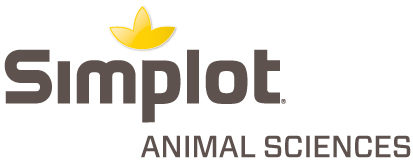Optimizing your farm’s reproductive performance is crucial to profitability. Elevating your reproduction program starts with accurate heat detection. Animal monitoring systems are a time-tested and proven solution. Plus, they hold the key to unlocking other hidden values that bring more dollars to your bottom line.
Here are three ways monitoring systems can benefit your reproduction program.
1. Put more eyes on your heat detection
More accurate heat detection increases the number of cows on the breeding list, can reduce the need for synchronization programs and helps get cows pregnant faster. It also helps confirm problem breeders faster so that you can make more profitable decisions.
Traditional heat detection relies on visual checks or checking for rubbed-off paint once or twice a day. When employees or breeders check pens for heats, they have a limited time to look and decide. Animal monitoring systems work around the clock to provide 24-hour heat detection, even when no one is around.
This 24/7 monitoring helps ensure more accurate identification of cows in heat by measuring various ways cattle express heat. This can include standing, mounting, chin resting, sniffing and increased activity.
We all have cows that never show heat or have more subtle heat expressions. They are more likely to show heat by getting up in the middle of the night, sniffing around the barn for a couple of hours and then returning to lie down. Tracking multiple heat expressions gives you more objective information to make more confident reproduction decisions.
Some farms have been able to reduce or eliminate the number of animals they enroll in a timed A.I. program when using an animal monitoring system. For example, a Washington state dairy I work with still uses a synchronization program for cows not detectably in heat. However, they have reduced their shots by 50% or more, reducing overall costs and improving pregnancy rates. Their 21-day pregnancy rate averages 35%, up 10% from before using a monitoring system.
2. Amp up your heifer reproduction
More and more farms are using monitoring systems on their youngstock. Collar systems can be moved from heifer to heifer.
A 750-cow farm in Vermont puts collars on their heifers one month before their target breeding age. This allows them to monitor the heifers’ natural cycles. Once a heifer is confirmed 60 days pregnant, the collar is put on a new animal. This dairy still uses timed A.I. but has lowered its hormone use. Since installing the system, they’ve increased their pregnancy rate by about five percentage points year over year.
3. Empower your employees
A two-site, 8,000-cow dairy and a long-time monitoring system user has experienced less employee turnover since adding their system. They find it easier to manage employees and have reduced the need for extensive training or retraining.
Employees now have tasks that are easier to learn and navigate. Instead of learning how to detect heats and complete this task a few times a day, they learn the system and how to check a list for heats. While heat detection skills are still valuable, they spend less time watching for heats.
You can get even more time back by using a monitoring system with animal location. Instead of disrupting pens to find a cow to breed, the system can locate and transmit the exact position of single or multiple cows to your mobile device or computer.
If you’re used to locking up cows and tail-chalking them daily – you no longer need to. Monitoring systems eliminate this job for you.
The beauty of monitoring systems is that they can be tailored to meet your needs – from lightening workloads and creating a predictable schedule to providing valuable data you can use to analyze your reproductive program and hold your team accountable.
Animal monitoring systems can set your farm up for reproductive success, providing an all-in-one solution for heat detection, identification and more. Partner with your milking equipment dealer to explore monitoring systems that can work for your herd.
Be future-ready with these considerations
- Monitoring systems offer flexibility to adapt to your farm and management style. If you are considering expansion, moving to milking robots, adding sort gates or other technology, they can be a building block for integrating those changes.
- Consider how the system provides identification, which is the basis for most integration capabilities. Some systems offer independent ID technology, so the tag still IDs even when the battery dies.
- Once you incorporate a monitoring system into your herd management program, it always needs to work. If you run into a challenge or need help troubleshooting, you’ll want technical support you can rely on. Look for a monitoring system company that has local support and a 24-hour hotline you can call.






